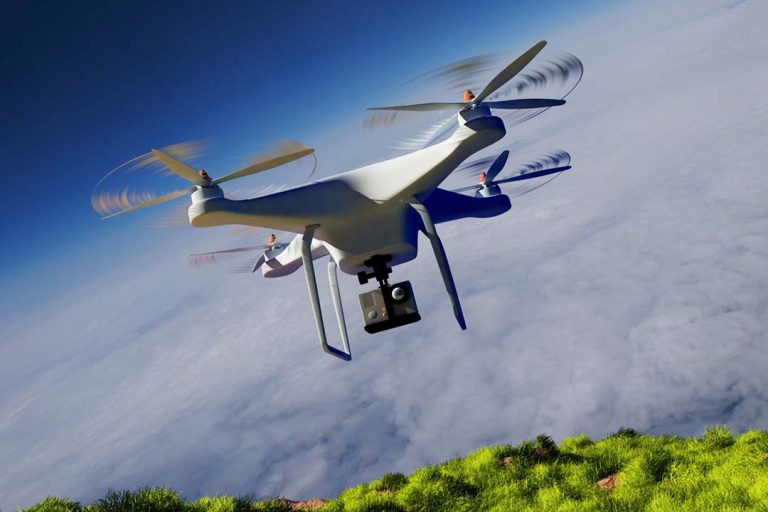The market for imaging technology for precision agriculture has witnessed significant growth in recent years, driven by the increasing adoption of precision agriculture practices around the world. Imaging technology in precision agriculture includes various techniques such as multispectral imaging, hyperspectral imaging, thermal imaging, and LiDAR (light detection and ranging). These technologies facilitate the collection of high-resolution data, allowing farmers to monitor crop health, detect diseases, assess nutrient levels, and identify areas requiring intervention. With advances in sensor technology, imaging solutions are becoming more accessible, affordable and easier to integrate with existing agricultural machinery and management systems.
Market growth factors
The growth of the imaging technology market for precision agriculture can be attributed to several key factors. First, a growing global population and rising food demand are putting pressure on agricultural systems to boost productivity while reducing environmental impact. Imaging technology allows farmers to optimize resource use, leading to sustainable agricultural practices and improved food security.
Second, advances in remote sensing technologies and data analytics have expanded the capabilities of imaging solutions in agriculture. Machine learning algorithms and artificial intelligence technologies make it possible to interpret vast amounts of imaging data, providing valuable insights for decision making.
In addition, government initiatives and subsidies encouraging the adoption of precision agriculture are driving the market growth. Many governments are incentivizing farmers to invest in technological solutions that enhance productivity, conserve resources and reduce greenhouse gas emissions.
The text continues below the image

Opportunities
Precision agriculture increasingly relies on imaging technologies for data collection, analysis, and decision-making processes. These technologies include various forms of remote sensing, such as multispectral imaging, hyperspectral imaging, LiDAR (light detection and ranging), and others.
One of the notable opportunities in this market lies in the integration of artificial intelligence (AI) and machine learning algorithms with imaging technologies. These advanced algorithms make it possible to interpret vast amounts of data collected by imaging sensors, providing farmers with actionable insights for crop management. AI-based image analysis can identify crop diseases, detect nutrient deficiencies, and predict yield potential with high accuracy, thus enhancing productivity and reducing input costs.
Another opportunity arises from the increasing reliance on drones in agriculture. Drones equipped with imaging sensors provide farmers the ability to monitor large agricultural fields quickly and affordably. The use of drones allows precise mapping of crops, assessment of plant health, and identification of areas requiring intervention, such as irrigation or pesticide application. As drone technology continues to advance and regulatory barriers decrease, the adoption of drones for agricultural photography is expected to accelerate, offering significant growth prospects for market players.
Market trends
One of the prominent trends shaping the precision implant imaging technology market is the integration of artificial intelligence (AI) and machine learning (ML) algorithms into imaging systems. These technologies enable automated data analysis, allowing farmers to make real-time data-driven decisions regarding crop health, pest infestations, and nutrient deficiencies. In addition, there is a growing demand for multispectral and hyperspectral imaging solutions, which provide detailed insights into crop health by capturing information outside the visible spectrum. The adoption of drones equipped with high-resolution cameras for aerial photography is also on the rise, providing farmers with a cost-effective way to monitor large agricultural fields with unprecedented precision.
Market challenges
Despite a promising growth trajectory, the imaging technology market for precision agriculture faces several challenges. One major hurdle is the high initial investment required to implement imaging technology solutions, including the purchase of specialized equipment and software, as well as the costs associated with training staff to operate these systems effectively. Furthermore, there are concerns about data privacy and security, especially regarding the collection and storage of sensitive agricultural data. In addition, the lack of standardized protocols for data interpretation and integration poses interoperability issues, hindering seamless collaboration between different imaging technology platforms and agricultural management systems.
The latest developments
Recent developments in the imaging technology market for precision agriculture have focused on enhancing scalability and accessibility of imaging solutions for farmers of all levels. Emerging startups and established players alike are investing in developing affordable, easy-to-use imaging devices that meet the needs of smallholder farmers in both developed and developing regions.
Furthermore, advances in remote sensing technologies, such as satellite imaging and unmanned aerial vehicles, are expanding the scope of precision agriculture beyond traditional crop monitoring to include applications such as soil mapping, irrigation management, and yield prediction. Collaborative efforts between industry stakeholders, academic institutions and government agencies are driving innovation in data analytics and predictive modeling, enabling farmers to improve agricultural practices and mitigate risks associated with climate change and volatile market conditions.

